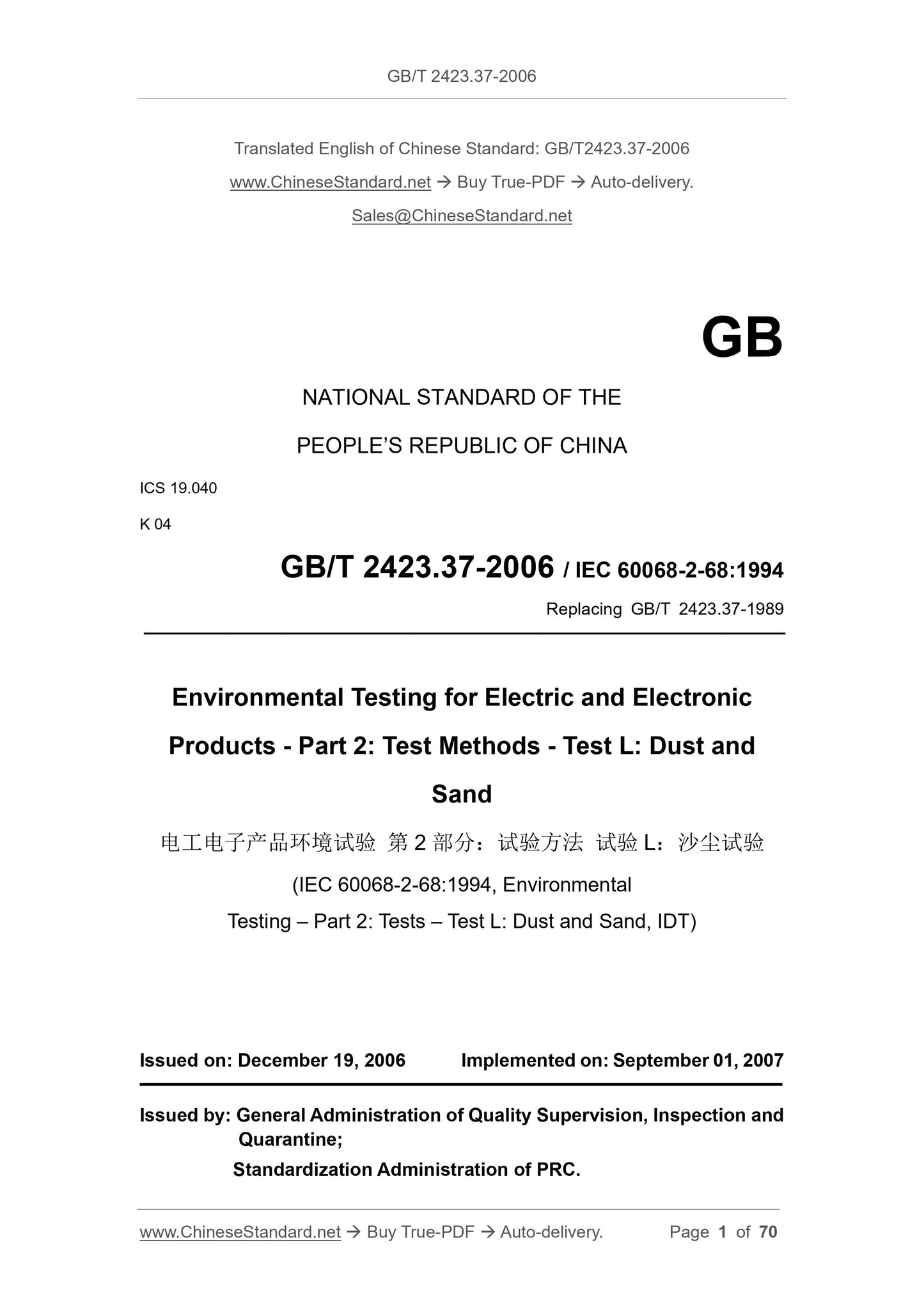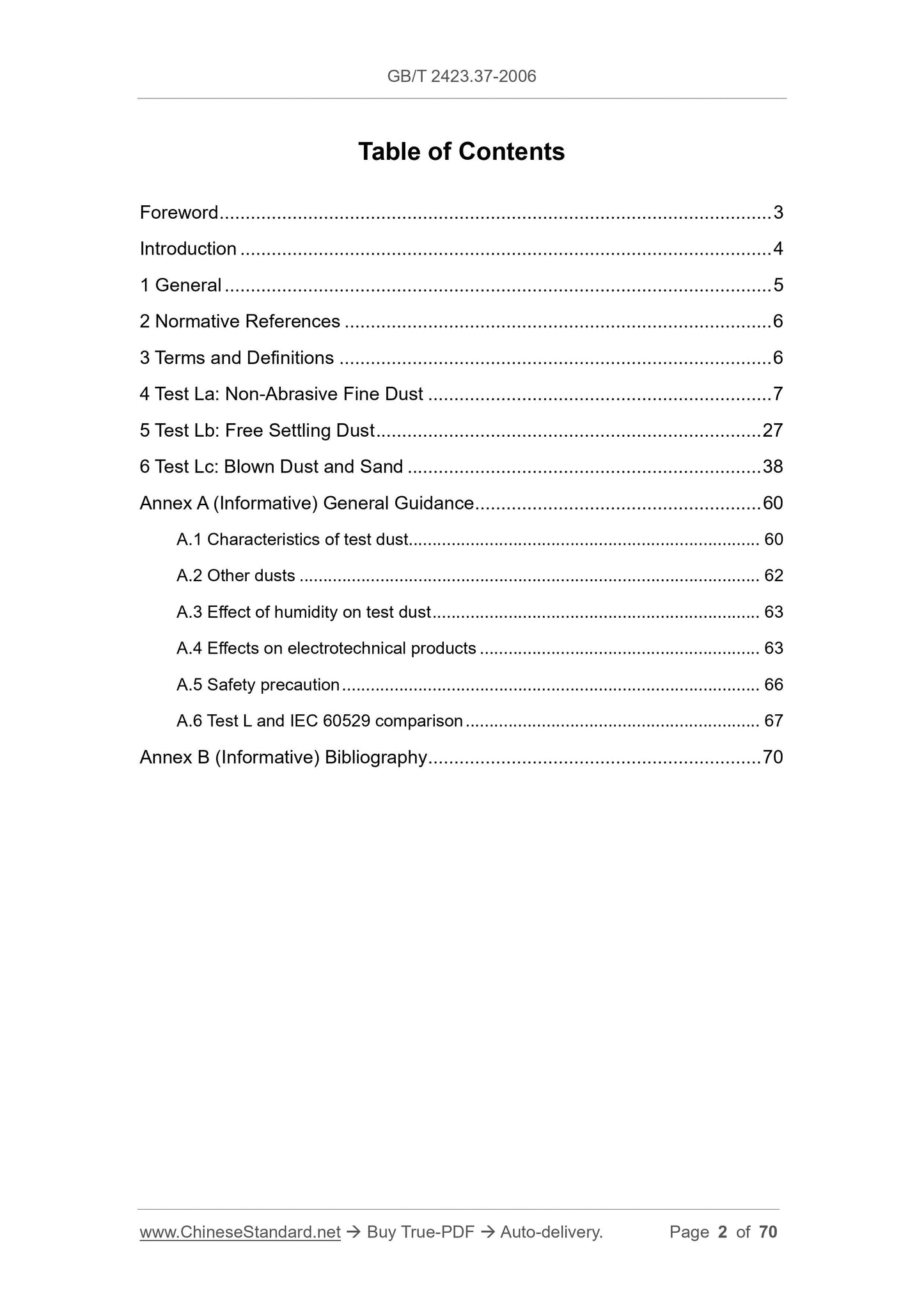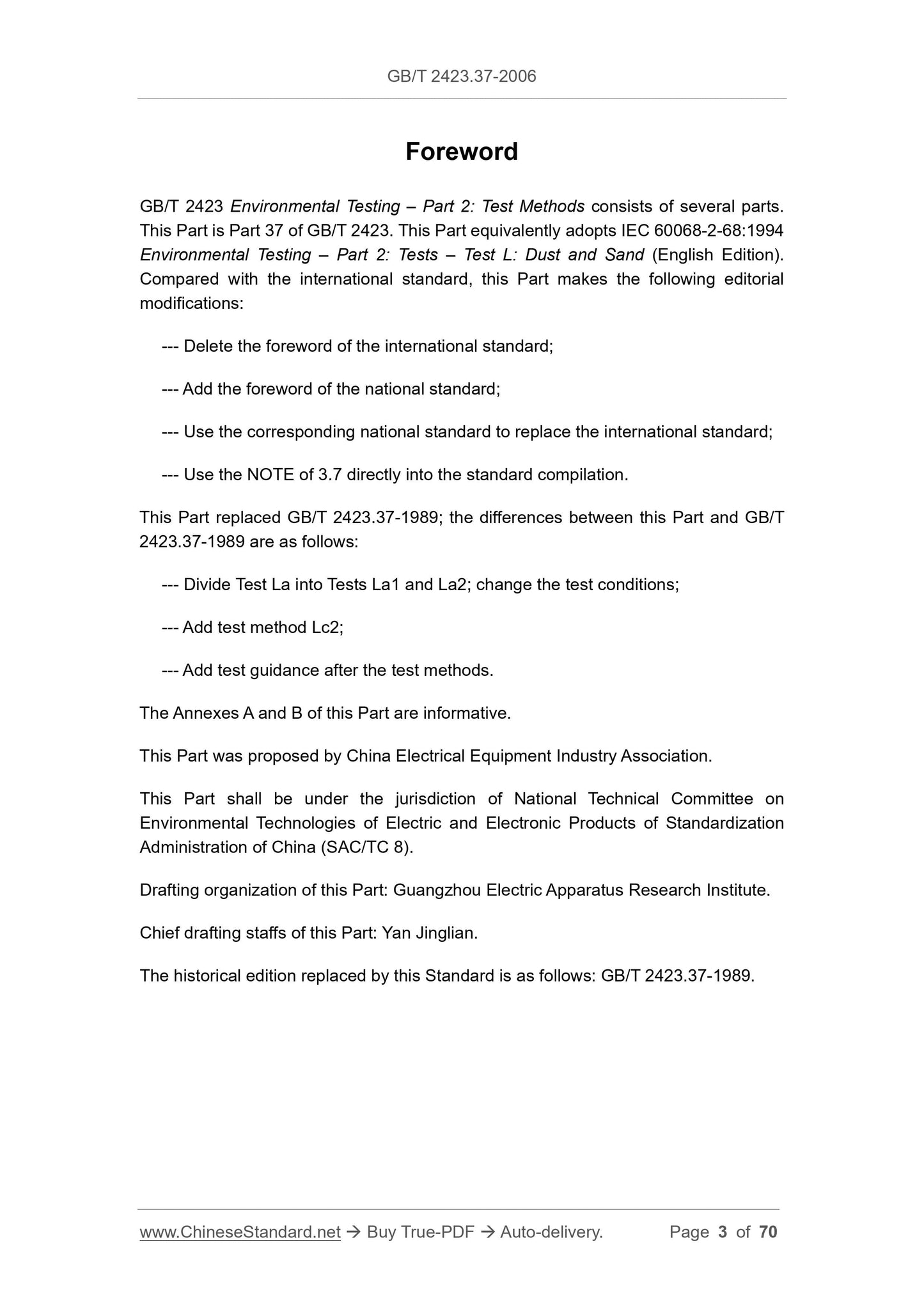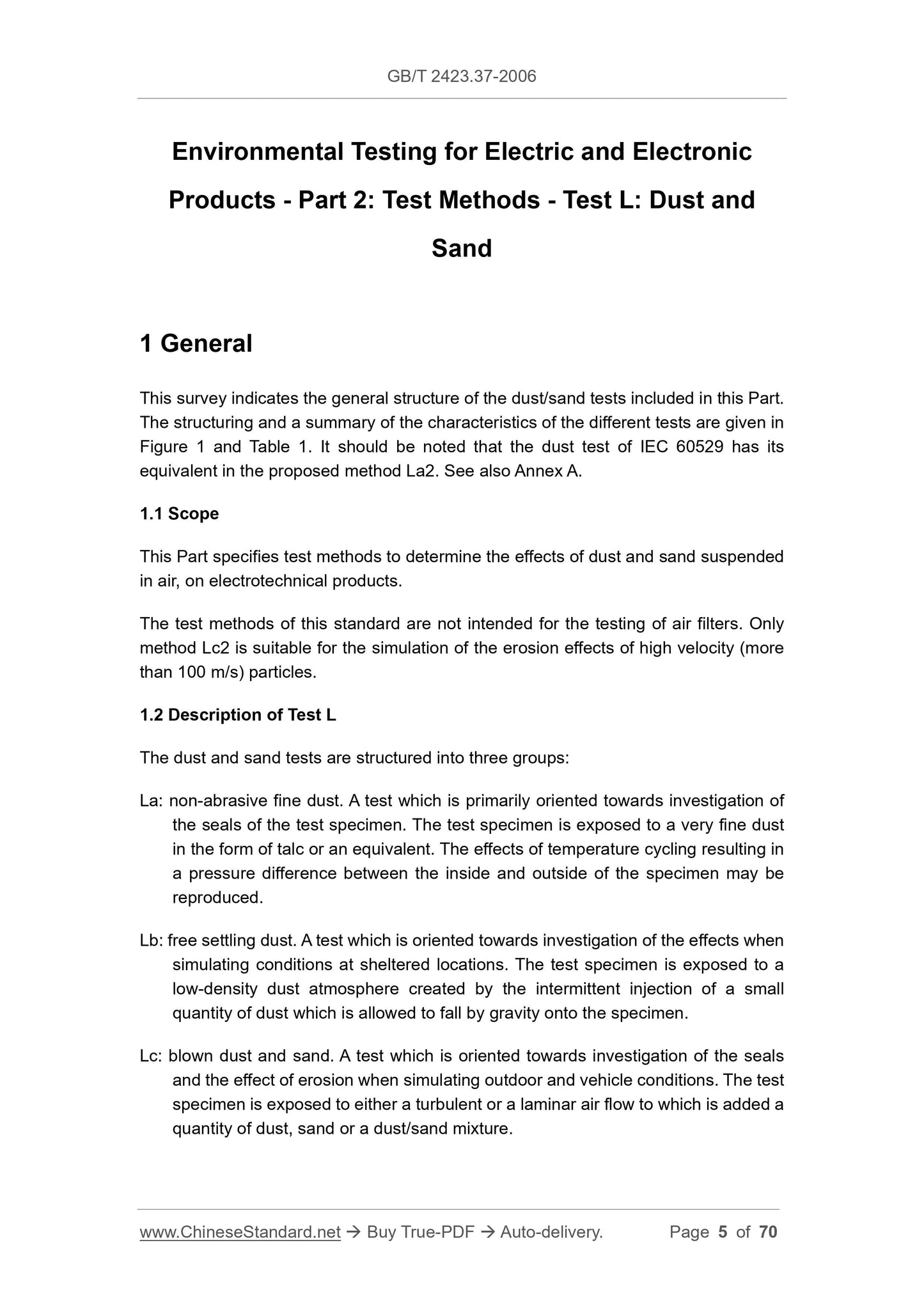1
/
of
4
www.ChineseStandard.us -- Field Test Asia Pte. Ltd.
GB/T 2423.37-2006 English PDF (GB/T2423.37-2006)
GB/T 2423.37-2006 English PDF (GB/T2423.37-2006)
Regular price
$585.00
Regular price
Sale price
$585.00
Unit price
/
per
Shipping calculated at checkout.
Couldn't load pickup availability
GB/T 2423.37-2006: Environmental testing for electric and electronic products - Part 2: Test methods - Test L: Dust and sand
Delivery: 9 seconds. Download (and Email) true-PDF + Invoice.Get Quotation: Click GB/T 2423.37-2006 (Self-service in 1-minute)
Newer / historical versions: GB/T 2423.37-2006
Preview True-PDF
Scope
This survey indicates the general structure of the dust/sand tests included in this Part.The structuring and a summary of the characteristics of the different tests are given in
Figure 1 and Table 1.It should be noted that the dust test of IEC 60529 has its
equivalent in the proposed method La2.See also Annex A.
Basic Data
| Standard ID | GB/T 2423.37-2006 (GB/T2423.37-2006) |
| Description (Translated English) | Environmental testing for electric and electronic products - Part 2: Test methods - Test L: Dust and sand |
| Sector / Industry | National Standard (Recommended) |
| Classification of Chinese Standard | K04 |
| Classification of International Standard | 19.040 |
| Word Count Estimation | 43,42 |
| Date of Issue | 2006-12-19 |
| Date of Implementation | 2007-09-01 |
| Older Standard (superseded by this standard) | GB/T 2423.37-1989 |
| Quoted Standard | GB/T 4797.6-1995; IEC 60529-2001 |
| Adopted Standard | IEC 60068-2-68-1994, IDT |
| Regulation (derived from) | China Announcement of Newly Approved National Standards No. 13 of 2006 (No. 100 overall) |
| Issuing agency(ies) | General Administration of Quality Supervision, Inspection and Quarantine of the People's Republic of China, Standardization Administration of the People's Republic of China |
| Summary | This standard specifies the dust suspended in the air to determine the product 's impact test methods. This test method is not suitable for detecting side air filter. Only test method for analog speed Lc2 particles (greater than 100 m/s) of the corrosive effects. |
Share







